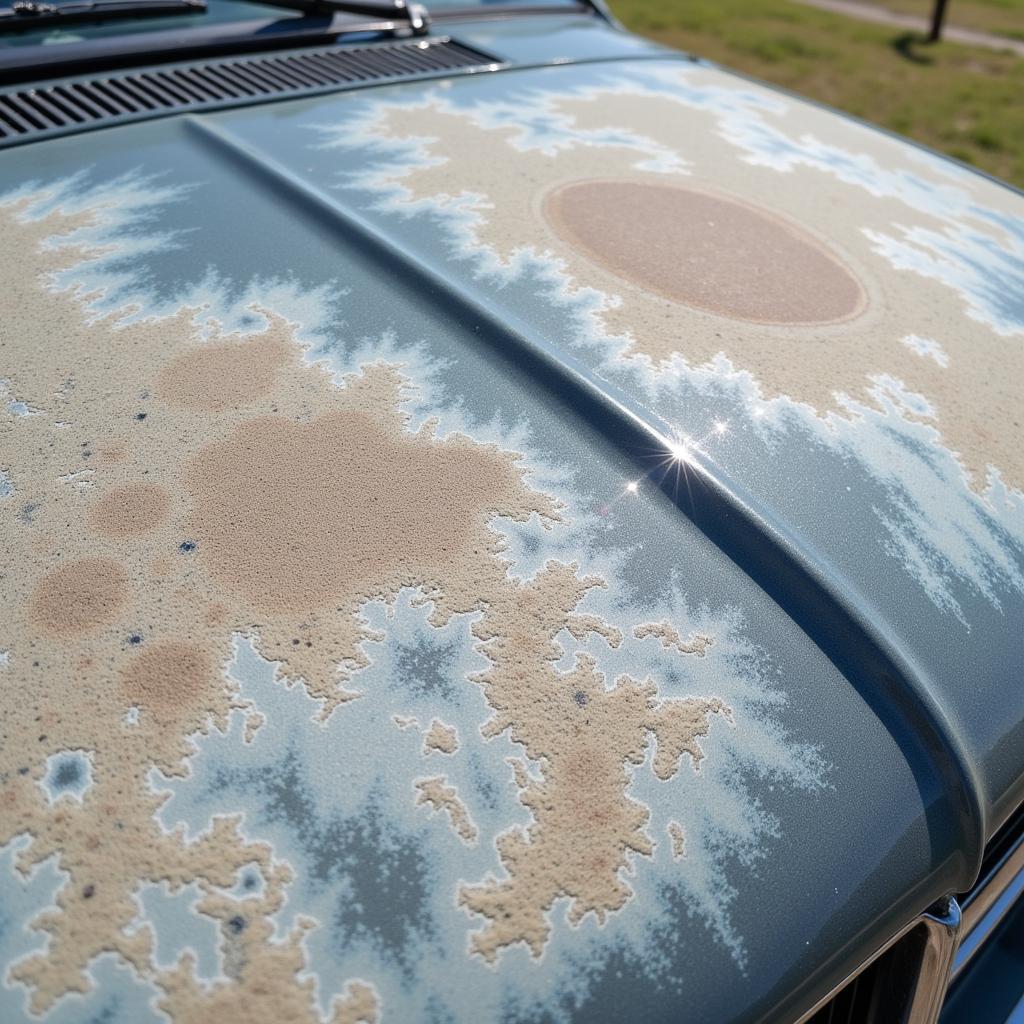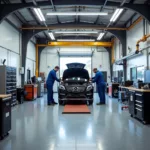Oxidized paint can make your car look dull and aged. If you’re wondering how to repair heavily oxidized paint on a car, this guide will walk you through the process, providing expert tips and techniques to restore your car’s finish to its former glory. We’ll cover everything from identifying the level of oxidation to selecting the right products and achieving professional-looking results.
Restoring heavily oxidized paint requires more than just a quick wash and wax. It involves a multi-step process that includes assessing the damage, choosing the appropriate cleaning and polishing compounds, and protecting the newly restored finish. Let’s dive into the details.
Understanding Car Paint Oxidation
Before we begin the repair process, it’s important to understand what causes car paint oxidation. Oxidation is a chemical reaction that occurs when the paint’s clear coat is exposed to UV rays, pollutants, and other environmental factors. This reaction breaks down the clear coat, causing the paint to appear faded, chalky, and dull.
Identifying the Severity of Oxidation
The first step in how to repair heavily oxidized paint on a car is to determine the extent of the damage. Lightly oxidized paint might only require a thorough cleaning and waxing, while heavily oxidized paint needs more intensive treatment. Run your hand over the clean, dry paint. If it feels slightly rough, it’s lightly oxidized. If it feels very rough or gritty, the oxidation is severe.
Gathering the Necessary Tools and Materials
Now that you’ve assessed the damage, gather the following tools and materials: car wash soap, microfiber wash mitts and towels, clay bar, car polish, rubbing compound (for severe oxidation), orbital polisher (optional but recommended), masking tape, and car wax or sealant.
Choosing the Right Products
Selecting the right products is crucial for successful paint restoration. For heavily oxidized paint, you’ll need a high-quality rubbing compound followed by a polishing compound. How to repair oxidized car paint explains this in more detail. Choosing a good quality car wax or sealant will protect the newly restored paint.
Step-by-Step Guide to Repairing Heavily Oxidized Paint
-
Wash and Dry Your Car Thoroughly: This removes loose dirt and debris. Use a quality car wash soap and microfiber wash mitts to avoid scratching the paint.
-
Use a Clay Bar: This removes embedded contaminants that washing can’t.
-
Apply Rubbing Compound: For heavily oxidized paint, this is the key step. Apply a small amount of rubbing compound to a section of the car and work it in using an orbital polisher or by hand. Repair oxidized paint car provides a useful guide for this stage. Work in small sections, overlapping each pass.
-
Polish the Paint: After the rubbing compound, use a polishing compound to refine the paint and remove any swirl marks left by the rubbing compound.
-
Apply Wax or Sealant: This protects the newly restored paint and adds a layer of shine.
Tips for Achieving the Best Results
-
Work in a shaded area to prevent the products from drying too quickly.
-
Use light pressure when applying the rubbing and polishing compounds.
-
Don’t let the rubbing compound dry on the paint.
Maintaining Your Car’s Paint
Once you’ve restored your car’s paint, regular washing and waxing will help maintain its shine and prevent future oxidation. How to repair oxidized car paint spots offers some great advice on dealing with minor oxidation spots before they become major problems.
Conclusion
Repairing heavily oxidized car paint can be a rewarding DIY project. By following the steps outlined in this guide, you can restore your car’s finish to its former glory. Remember to choose the right products, work patiently, and protect your newly restored paint to enjoy a long-lasting shine. How to repair heavily oxidized paint on a car is a manageable task with the right approach.
FAQ
- Can I repair heavily oxidized paint myself? Yes, with the right tools and patience, you can achieve professional results.
- What causes car paint oxidation? Exposure to UV rays, pollutants, and harsh weather conditions.
- How often should I wax my car? Every three to six months is recommended.
- Can I use a rubbing compound on all types of car paint? Check the product label for compatibility.
- What’s the difference between rubbing compound and polishing compound? Rubbing compound is more abrasive and used for heavy oxidation, while polishing compound refines the paint and removes swirl marks.
- How can I tell if my car’s paint is oxidized? Oxidized paint feels rough and looks dull and faded.
- What if the oxidation is too severe? You might need professional help or consider repainting.
Common Scenarios
- Scenario 1: White Chalky Residue: This is a classic sign of oxidation.
- Scenario 2: Faded Paint Color: The paint loses its vibrancy and appears dull.
- Scenario 3: Rough Paint Surface: The paint feels gritty to the touch.
Related Questions
- How to remove scratches from car paint?
- Best car wax for black cars?
- How to protect car paint from sun damage?
Need assistance? Contact us via WhatsApp: +1(641)206-8880, Email: [email protected]. We offer 24/7 customer support.


